A couple years back, on the last winter day the Madison River was open to fishing, I ran into an old friend fresh off fishing a midge emergence at Three Dollar Bridge. As any fisherman would, I asked about his success. He admitted to struggling, managing to catch only a couple trout despite an abundance of midges and rising fish. This was out of character for him, so I pressed for more details. He retrieved his flies from his car, showing me those he had used and asking what I thought. All his patterns were viable imitations; any of them should have sufficed. I inquired about his presentation. He said he didn’t consider it a problem, but did note that he had been fishing two flies, both dry, separated by about eighteen inches of tippet. Might this have been an issue, he wondered? I sure thought so.
Two reasons sprung to mind: inaccurate casting and drag. When I watch most anglers fish two flies, I’m struck by the failure of accuracy to rate as a paramount concern. It’s as if these fishermen figure that by adding a second fly to their leader—doubling their chances for success, so goes the theory—a reasonably close cast somehow becomes close enough. But no matter how many flies we tie to our leader, we’re never absolved of the responsibility for accurate casting. Least of all on rivers like the Madison, where intimate pockets and feeding lies demand accurate fly placement. (The pocket-water of the Madison flows in stark contrast to, say, the flats of the Missouri or Bighorn, where pods of trout feeding shoulder-to-shoulder can often be cast at with little regard for accuracy, since even imprecise casts will cover at least a few fish.)
I asked my friend which of his two flies—dropper or stretcher—he had aimed at the rising trout. I received nothing so much as a blank look, until suddenly he realized the implications of my question. Turns out he wasn’t casting with any intention at all of making certain that at least one of his flies drifted precisely over a fish. Rather, he was merely hoping that one or both would be close enough to elicit a rise. But by casting in this manner it was very likely that neither of his flies properly covered the bulk of the risers.
As for drag, I think with two flies it’s more difficult to avoid. Two flies give the currents more to act on, and they generally do. (My friend acknowledged that many of his casts ended up dragging.) Sometimes this can be alleviated by spreading the flies farther apart, but doing that frequently leads back to problems with accuracy. And even when we do adequately control which fly we want the trout to see, what happens to the other? Is it landing randomly, in contrary currents, further compromising the float of its partner?
Not having been there to watch, I can’t say definitively what was behind my friend’s lack of success. But the use of two flies sounded awfully suspicious. So before automatically adding another fly to your leader, consider your reasons for doing so. If it’s only because you think it doubles your chances of success, proceed with caution. Multiple flies often hurt more than they help.
Beyond the idea of simply catching more fish, there are other reasons for fishing two flies. Many anglers find that they can keep better tabs on a small dry fly with the addition of a more visible partner. And getting nymphs down deep—especially in small sizes—is often more easily accomplished by using multiple flies.





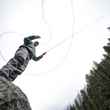




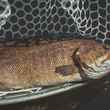









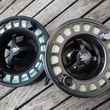
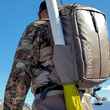




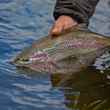
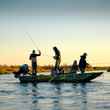

Comments
Mike Lundrigan replied on Permalink
I fish two wet flys 99.9% of the time and sometimes hook two trout on a single cast and even land both. I do target where the flys land and target those places where I have seen signs of a feeding fish or places which are good lies. My preferred rig is a buck tail streamer or muddler on the point and a soft hackle spider on the dropper. It has worked for me for almost 50 years. I see no reason to change it as it has proven successful on thousands of trout over that time span!
J. Handey replied on Permalink
I prefer to use one fly for another reason: when a two-fly rig breaks off, and one of
the flies hooks on a log, the second fly drags in the water, and a fish can hook itself
on this trailing fly. It can't free itself and will die. I've seen it more than once.
Henry K replied on Permalink
When I read the title of the article, I thought it was about nymphing with 2 flies and a strike indicator. Nope, it was about fishing a double dry fly rig, which I have on occasion. But I use it when the conditions do not allow me to see the actual target imitation I am using, say a spinner or small caddis at night. Then I will put on either a yarn indicator or a larger “indicator fly” that I am able to see at the junction of the leader to tippet, with the 3 ft tippet tied to the indicator fly and then to the target pattern. The indicator fly allows me to locate where I cast and to locate any rises that could be to my target pattern.
I fished the Madison River with my friend Gary Borger in 2012 and he wrote about using a “Marker Fly” in his blog. Google “Gary Borger blog marker fly” and the link will show up. What I call an indicator fly, Gary calls a marker fly.
A dry dropper rig is a common double fly rig. I believe that there is also tension drag between the two flies except that it is usually the dry dragging the nymph similar to the larger of the two dries dragging the smaller fly. I believe that surface drag is more visible to the fish because it cause disruption of the water surface (slip stream), so the problem is not that there is less drag with a dry dropper; it is that with a double dry, surface drag is more detectable than underwater drag.
Similarly it is common to fish a strike indicator with a double nymph rig. In this situation, there is ALWAYS drag if we are to detect the strike. There must be tension between the indicator and that nymphs for a strike to register, and since the indicator is on the faster surface current, it is dragging the nymphs downstream. The fact that this system still catches a lot of fish, suggests to me that under water drag is less obvious to the fish.
I do agree that a double dry fly rig is not the way to fish to specific rising fish. As you indicate, it is better to use imitative pattern and to specifically target a specific fish with that pattern. This single fly method is also a good way to practice casting accuracy while you fish, something a double dry fly rig does not lend itself to.
Doug replied on Permalink
I've fished double dry plenty and caught plenty of lunkers that way. I've even tried three and four sometimes with success. I've never had trouble catching plenty. If I need better accuracy I can dial it don to a specific fly. Extra tangles are a downside, but it's been a successful strategy for me for many years.
Pages